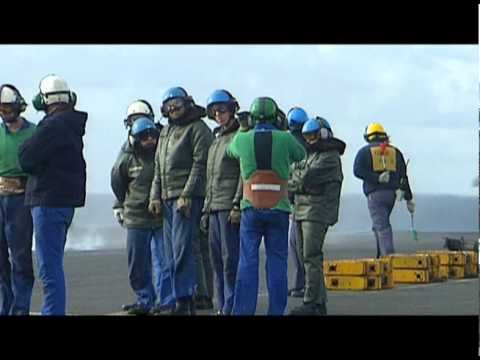The French Naval Aviation took delivery of 15 Eurocopter (now Airbus Helicopters) AS565 Panther between 1993 and 1998 for maritime operations. As a response to increasing acts of piracy in the Gulf of Aden, since 2008, Panthers have been routinely dispatched upon multiple French frigates that have conducted deployments in support of Operation Atalanta, a long term pan-European counter-piracy operation. In the Aden, the Panther has been typically used for maritime patrol, surveillance and troop-transport missions, such as the transportation of strike teams and the retrieval of detainees.
In May 2009, France announced a major mid-life upgrade program for the Aeronavale’s Panther fleet, focused on cockpit upgrades and improved defensive/offensive equipment. The additions and alterations include a new glass cockpit compatible with night vision goggles (NVG), electro-optical sensors, a new anti-jamming radio, Link 11 data-link, and a self-protection system based on that used on the Eurocopter Tiger. On 31 May 2011, the first of 16 Standard 2 Panthers was delivered back to the French Navy.
The AS565 Panther is a twin-engine medium-sized multi-mission rotorcraft. It is capable of performing various naval and land-based missions, such as maritime security, search and rescue (SAR), casualty evacuation (CASEVAC), vertical replenishment, surveillance, special forces operations, anti-submarine warfare (ASW) and Anti-surface warfare (ASuW). The Panther is powered by a pair of Turbomeca Arriel turboshaft engines, which drives the rotorcraft’s main rotor as well as the fenestron anti-torque tail rotor device. The flight profile of the Panther has been described as being easy to manoeuver, possessing generous g-force limitations and a high level of stability.
In the commando-transport configuration, the Panther may carry up to 10 fully armed soldiers on board at a time in addition to the two pilots flying the aircraft. The main cabin can be rapidly reconfigured to conduct various roles, such as troop-transport, SAR, and MEDIVAC missions; optional equipment includes a full medical suite, forward-looking infrared (FLIR) camera, emergency flotation, loudspeaker, variable-speed hoist, cargo sling, search light, and a stretcher-support structure.
Various avionics are present upon the Panther; some variants are fitted with the advanced human-machine interface (HMI) glass cockpit. It features the vehicle and engine multifunction display (VEMD), integrated electronic standby instrument (ESI), usage monitoring system (UMS), traffic collision avoidance system (TCAS), terrain awareness and warning system (H-TAWS), and dedicated mission display coupled with a multi-sensor processor, a 4-axis automatic flight control system (AFCS), flight management system (FMS), and an advanced search radar. The design of the cockpit and avionics systems, such as the engine management system, provides a high level of automation as part of an effort to reduce workload upon the pilots. The cockpit was deliberately designed with extra panel space to accommodate future upgrades and additional instrumentation that may be installed.
The Panther can be armed with several different sets of munitions and armaments, dependent upon the intended role. Munitions include 20mm pod-mounted cannons, 68mm rocket pods, a maximum of eight Mistral air-to-air missiles, or a maximum of eight HOT anti-tank missiles; all of which can be mounted onto a universal weapon support beam. The weapon systems are integrated with a Crouzet HDH-2A electronic sight and the autopilot, the latter of which provides automatic flight handling assistance during weapons deployment to avoid negative tendencies such as nose droop. For improved survivability, the radar signature is reduced due to the use of composite materials across the airframe and the use of the fenestron tail rather than a conventional tail rotor; low infrared paints are also typically applied to the exterior surfaces and jet exhaust dilution devices are installed on the engines to reduce the Panther’s infrared signature. Damage resistance is increased by the adoption of self-sealing fuel tanks and armor-plated crew seating.















